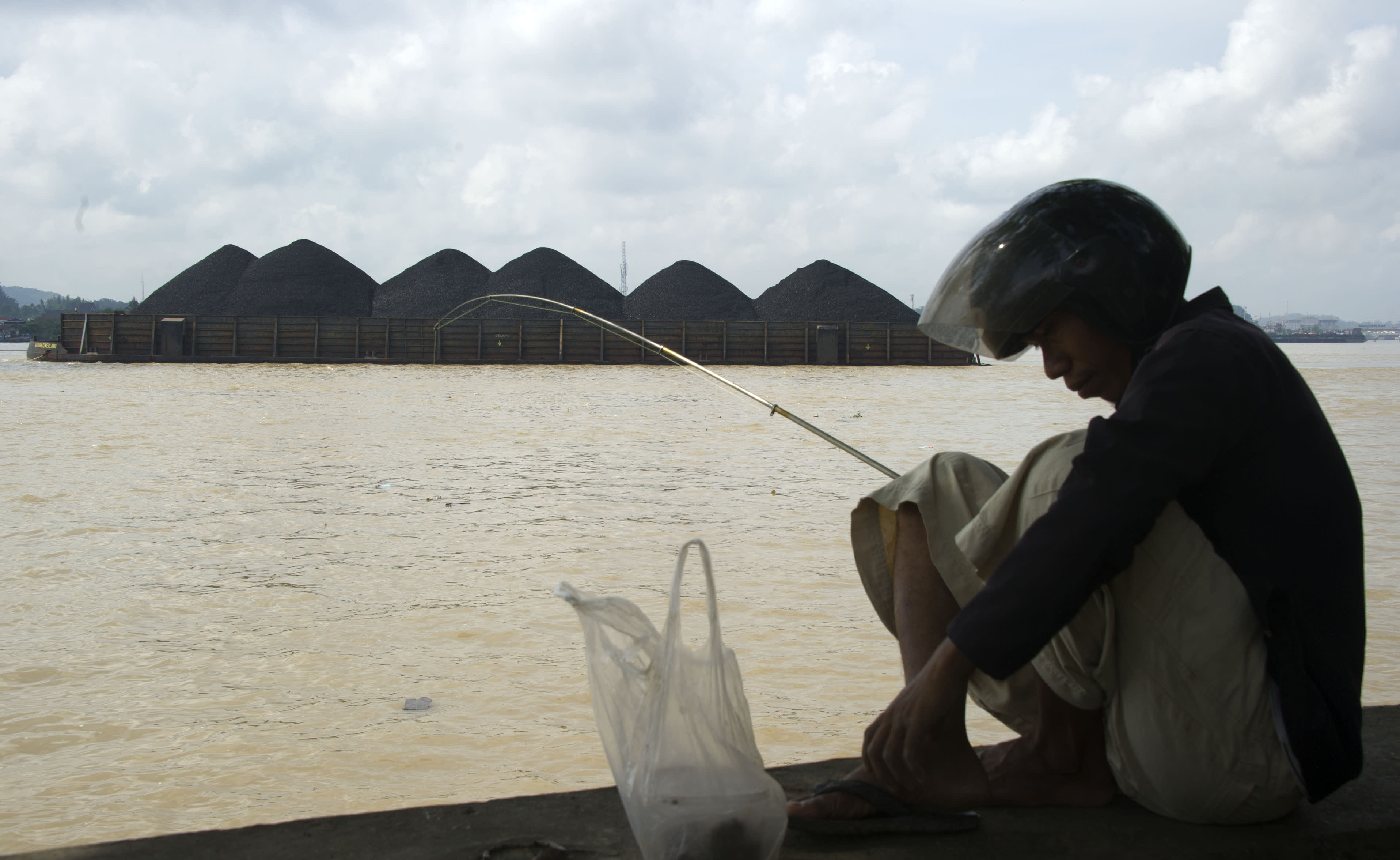
A man fishing as a barge passes on the river of Mahakam to load coal from the mining area in Samarinda, East Kalimantan in Indonesia.
Bay Ismoyo | AFP | Getty Images
Coal is still a dominant fuel in the rapidly growing economies of Southeast Asia, even amid a general global move toward cleaner energy sources, data from several recent reports show.
"The narrative surrounding coal has been pessimistic across the world. This will result in the gradual slowdown of new coal-fired capacity in Southeast Asia," said Jacqueline Tao, research associate at Wood Mackenzie, a commodity consultancy.
"However, the reality of rising power demand and affordability issues in the region mean that we will only start to see coal's declining power post-2030," Tao said on Sept. 25 when the consultancy released a new report.
"Coal is still king in Southeast Asia's power market," according to Wood Mackenzie.
The coal industry has been facing widespread criticism from environmental campaigners for causing pollution.
But global coal demand grew for a second straight year to reach 0.7% in 2018, data from the International Energy Agency (IEA) showed.
In its report published in December, the IEA projected coal use through 2023 to be stable as strong consumption growth in Southeast Asia and India offsets declining usage in Europe and North America.
"Coal demand grows across much of Asia due to its affordability and availability," the IEA in that report.
Not only will coal continue to be the dominant fuel source in power generation in Southeast Asia, its use will grow and peak in 2027 before slowing, the Wood Mackenzie study found. By 2040, coal will account for 36% of Southeast Asia's energy mix for power generation, according to the consultancy.
The demand surge is primarily driven by Indonesia and Vietnam, accounting for almost 60% of Southeast Asian power demand by 2040, said Tao.
However, as more banks shun the financing of coal projects amid government commitments to turn to cleaner energy sources, renewable energy is expected become more pervasive.
Wood Mackenzie estimates that solar and wind power plants will lead in Southeast Asia's power capacity mix at 35% in 2040. The investment in wind and solar power will make up 23% of total power investment, amounting to more than $89 billion from 2019 to 2040.
Problems with renewable energy in Southeast Asia
The expected growth in renewable energy will come even though such energy is "less cost competitive in the region compared to the rest of the world, and (faces) challenges such as land acquisition and intermittency issues," Tao added.
Intermittency issues refer to the availability of renewable power on days when there isn't enough resources such as sunlight or wind to power such plants. While the power plants could use batteries to store backup energy, there are still technological and cost challenges when implementing such plans.
Indeed, clean energy targets in Indonesia — Southeast Asia's largest economy — will be "tough to reach," Moody's Investors Service said in an early September report.
The Indonesian government has targeted generating 23% of electricity from renewable sources by 2025 — almost double the 12% now, but it will be "difficult to achieve because capacity expansion plans are still dominated by coal," Moody's analysts wrote in the report.
"The key challenge is the evolving policy and regulatory framework, which has seen multiple changes over the years," they added.
Coal-generated power also receives subsidies from the government, which makes its price more attractive than electricity generated from wind and solar energy, they noted. Other issues include tariffs for renewable energy projects.
Indonesia is also a sprawling archipelago with no strong electricity grids on many islands which makes it difficult for the country to host large project sites that could benefit from the economies of scale, the Moody's analysts added.
China and Japan are big investors in coal power
Globally, major coal user China is set to see the country's use fall 3% by 2023, the IEA noted in its December report.
But even as China seeks to cut politically sensitive air pollution at home, the country has been investing massively in coal projects outside its shores, notably in places linked to the Belt and Road Initiative.
East Asian economic powerhouses Japan and South Korea are also pumping money into the fossil fuel.
Japan had planned new coal-fired plants on its shores as the country cut back on its reliance on nuclear power after the Fukushima disaster in 2011. But there has been social and political backlash against new coal-fired plants.
Several Japanese utilities firms have cancelled plans for new coal-fired power plants, Reuters reported in April.
While producers of the fossil fuel have been championing "clean coal" technology that reduces pollutant emissions into the atmosphere, non-governmental environmental organization Greenpeace says such methods still produce pollution that is simply disposed elsewhere in the environment.
No comments:
Post a Comment